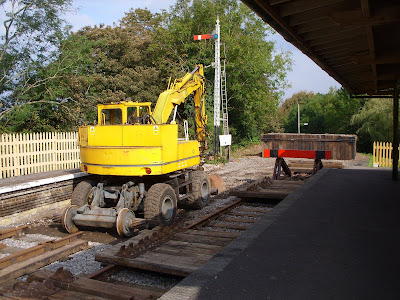
(Abingdon 1985)
I was looking at the Waverley route site yesterday and one of the FAQs was - Why was the route shut down previously – was it not lack of passenger demand? Why should it be any different this time?
I liked the answer so much I've modified it and nicked it for the sidebar!
The original Waverley Railway line was axed after the Beeching Plan which predicted a national decline in rail traffic. It focused entirely on long distance intercity passenger and freight services without due regard to the needs of local areas. Since then there have been major improvements to rail technology. Railways are now increasingly important to solve local travel needs and reduce the environmental impacts of road traffic and road congestion. There has consequently been a major resurgence in the demand for rail travel. As a result there is much more government emphasis today on improving public transport in order to provide an integrated public transport network.
This really does hit the nail on the head. The Waverley route was closed really late in the hate campaign - 1969. It was, like the S&D, a main line. It served several large towns, particularly Hawick and Galashiels. Nobody locally wanted the line closed. It left the whole of the Scottish Borders devoid of any real transport.
Devolution has led both Scotland and Wales to push well ahead of England in restoring rail lines that should never have closed. The new Waverley route will not have as large a population catchment area as the new S&D. Yet they are years ahead of us.
To me the real turning point was in 1976 when the possible closure of the Settle and Carlisle was reversed. From that date there have been no major rail closures in the UK. Lines and stations began reopening soon afterwards, even in England. The Channel Tunnel was built as a rail tunnel only. The new link to the London Olympics is rail only, there is no car parking. The world is changing, and this is before Peak Oil really hits. Petrol and diesel are still incredibly cheap, yet already our railways are busier than they have been for over 50 years.
And now 'our' government is beginning to soften us up for the end of generally available personal private powered transport. New railways and tramways, road pricing, congestion charges, Sustrans as custodians of future rebuilt rail routes, even busways are part of this process.
More on busways next post. Make sure you're sitting down when you read it!

































